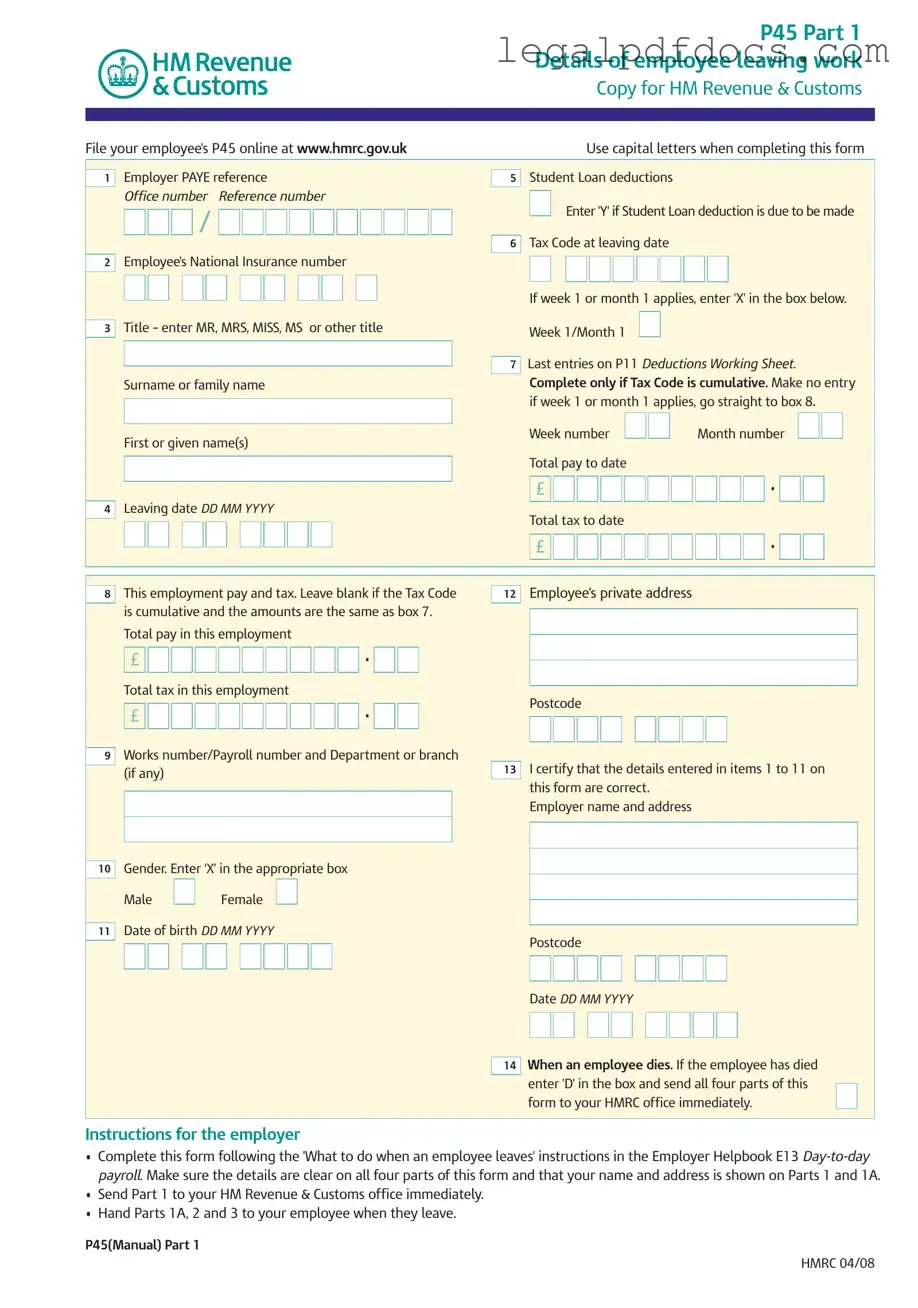The P45 It form is an essential document used in the UK payroll system when an employee leaves a job. It consists of three main parts, each serving a distinct purpose for the employer, the employee, and the new employer. Part 1 provides the necessary details for HM Revenue & Customs (HMRC), including the employee's National Insurance number, tax code, and total pay and tax to date. This information is crucial for ensuring that the employee's tax records are accurately maintained. Part 1A is a copy for the employee, who should keep it safe as it may be needed for tax returns or when applying for benefits. Part 2 is intended for the new employer and contains similar information to assist in the correct calculation of tax deductions moving forward. Completing the P45 form accurately is vital, as it helps prevent issues such as overpayment of taxes or incorrect tax codes being applied in future employment. Employers are required to submit the form promptly to HMRC, while employees must ensure they understand the implications of the information contained within it, especially if they are transitioning to new employment or claiming benefits.
